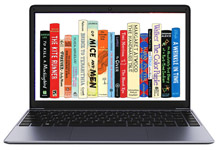
E-JASL: Electronic Journal of Academic and Special Librarianship (1999-2009, Volumes 1-10)
Date of this Version
Winter 2008
Document Type
Article
Citation
Electronic Journal of Academic and Special Librarianship (Winter 2008) 9(3). Also available at http://southernlibrarianship.icaap.org/content/v09n03/block_j01.html.
Abstract
Abstract
The primary purpose of assessment in academia is to support high-quality learning. To accomplish this tracking, monitoring and documenting student activity is important to providing excellent library service. By gathering information on student learning, assessments can pinpoint areas for improvement. Ideally, assessment should be quantitative, qualitative, and ongoing and have the ability to address different skills. Assessment is most effective when based on faculty teaching and student learning. Outcomes assessments are the only credible assessment for the distant learner. They are necessary to improve student learning results and are a means of gathering information about student learning that is built into and a natural part of the teaching-learning process. In the book, Assessing Learners Online, the comment was made “It is important to emphasize that the usefulness of an assessment depends largely on how well the domain being measured is defined or how adequately the norm group with whom students are being compared is known or described” (Oosterhof, Conrad, & Ely, 2008, p. 43). Means and methods that are developed by an institution's faculty are valuable tools when based on their teaching approaches and students’ successes and learning goals. The ability to track, monitor, and document students’ activities is a necessary and productive activity for the library. It is imperative that it is ongoing and assesses different skills. It is a proven way to assess instruction and learning. Comeaux says, “In general, e-assessment methods are classified into two categories, namely quantitative and qualitative assessment tools” (Comeaux, 2005, p. 90). Assessment measures must be quantitative as well as qualitative. Quantitative methods are aimed at the amount and frequency of assessment. Qualitative assessment is one that does not rely on numbers and statistics as a method of proving a theory or identifying facts. Qualitative assessment addresses methods that rely on descriptions rather than numbers. This paper summarizes the key roles assessment plays such as providing opportunities for student feedback and measuring the library’s impact. “As the world of information becomes more complex, 2 information literacy has become an increasingly important part of the education process” (Smith, 2001, p. 13). The Distance Education Librarian at Eastern Michigan University of Ypsilanti, Michigan, has primarily relied on questionnaires as a tool to evaluate library services provided to the distance learning community. The content of the questionnaires has open-ended questions so that the students can express themselves adequately. This allows the Distance Education Librarian to measure the impact of the library services provided the distance learning community. Through assessment, educators are able to provide quality learning experiences to students and support successful educational endeavors.
Included in
Communication Technology and New Media Commons, Information Literacy Commons, Online and Distance Education Commons, Scholarly Communication Commons, Scholarly Publishing Commons


Comments
Copyright 2008, the author. Used by permission.